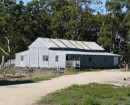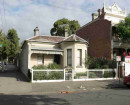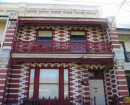ATHENAEUM
28-36 OCEAN BEACH ROAD SORRENTO, MORNINGTON PENINSULA SHIRE
-
Add to tour
You must log in to do that.
-
Share
-
Shortlist place
You must log in to do that.
- Download report
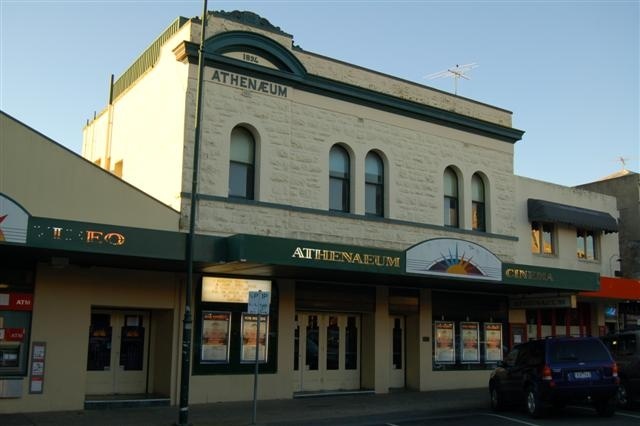

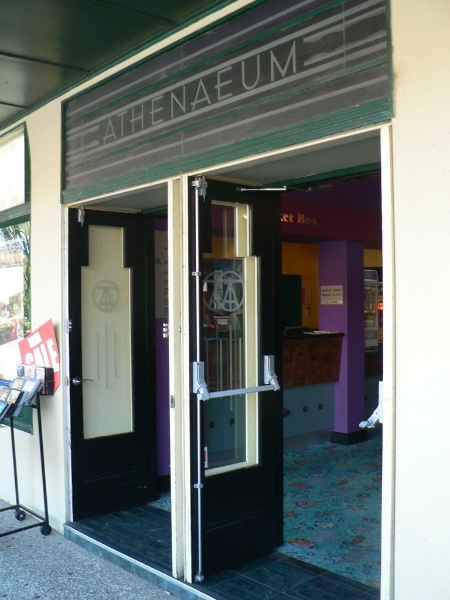
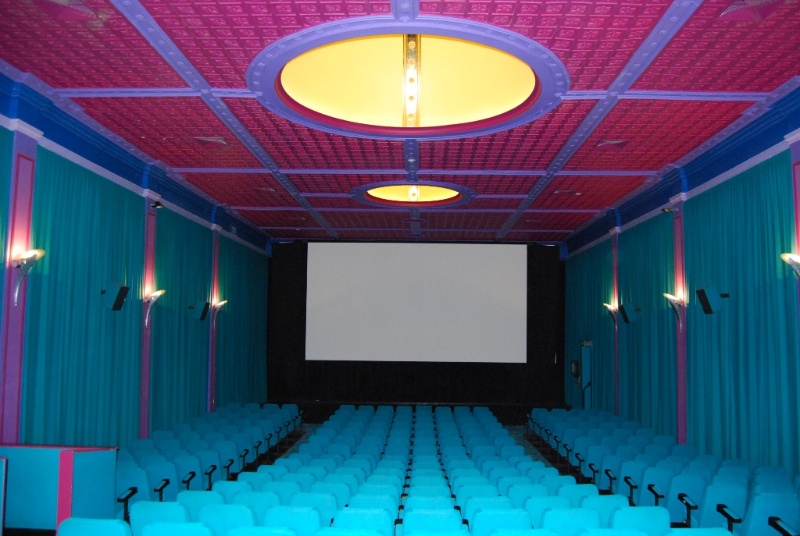
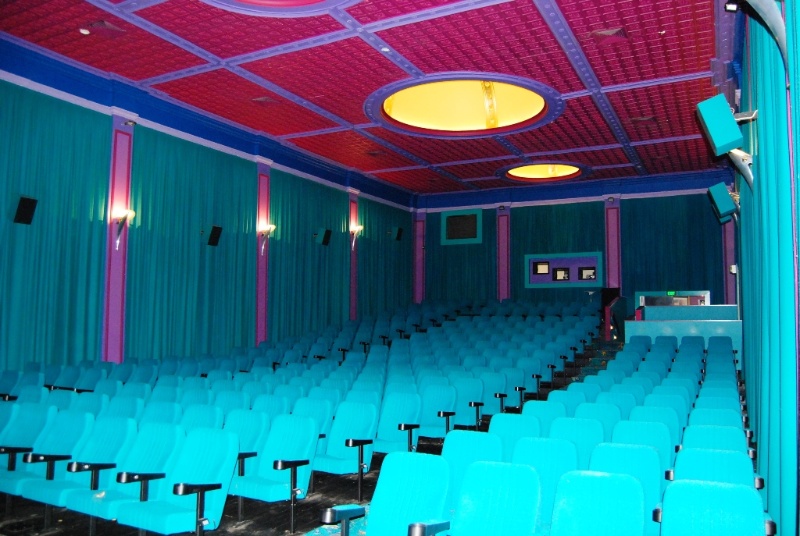

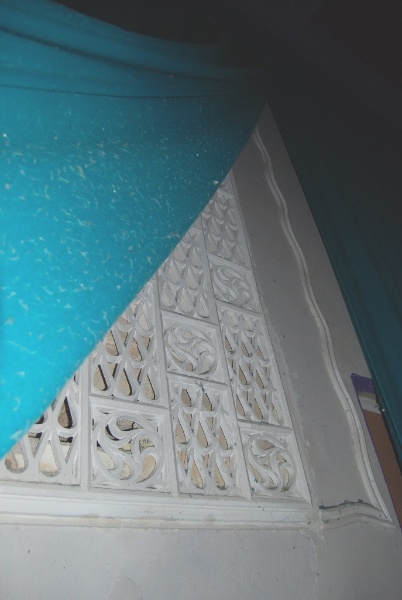
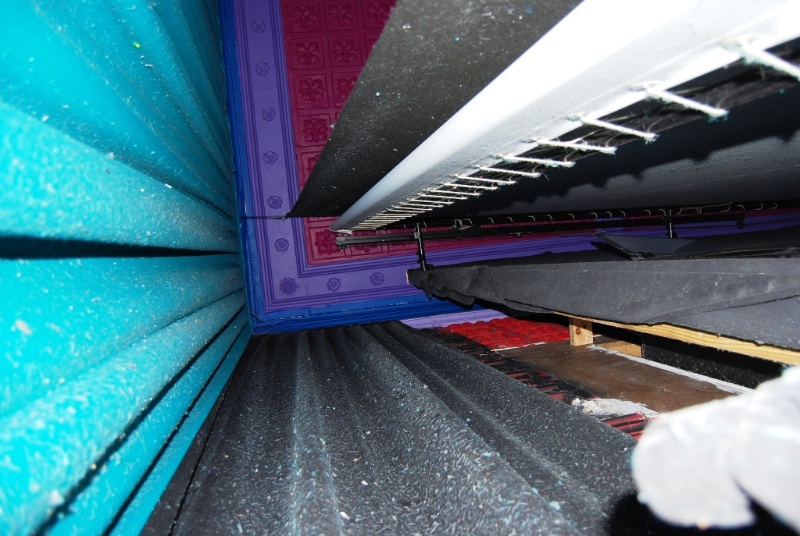

Statement of Significance
What is significant?
The Athenaeum theatre was built in 1894 in the commercial centre of the seaside town of Sorrento, which became a popular destination in the 1880s. Designed by Melbourne architect, J. F. Gibbins, the multi-purpose theatrical venue was built for Isaac Bensilum, local councillor, hotelier and entrepreneur. The building comprised an auditorium, a foyer, retiring rooms, a deep stage with dressing and store rooms beneath, and two shops with residences above. Originally used for various forms of entertainment, silent films were shown in the auditorium in the 1920s from a newly installed bio-box and by 1932 talking pictures were shown. This coincided with Moderne alterations made to the building and the introduction of new equipment.
The Athenaeum is a two storey building constructed from rough hewn local limestone with brick dressings. The front elevation is a simply detailed Italianate facade, with a heavy cornice which runs across the facade below the parapet. This incorporates a segmental arch detail placed at one extreme end with a raised decorative scroll on the parapet above. The grouping of first floor windows is also irregular, and the resulting front facade is therefore unusually asymmetrical in appearance.
The interior of the building displays both original and later Moderne detailing. The decorative auditorium features a large cornice, simple pilasters and three deep plaster domes which are set into a ceiling of panelled, floral plasterwork. Similar plasterwork also lines the proscenium wall. These features date from the original construction. Moderne styled plasterwork has been added between the pilasters of the side walls. The foyer entrance contains a bank of Moderne doors, with a frosted glass strip above incorporating the word 'Athenaeum'.
Various alterations have been made to the building since the 1930s, however the original 1894 building form remains largely intact. Extensive renovations to the building in the mid-1990s included repainting, the installation of new fittings, including lights in the Moderne style, the insertion of a wide screen in front of the early proscenium, the curtaining of the auditorium walls and the addition of two new cinemas in an adjoining building. The building has been used as a permanent cinema for many years.
How is it significant?
The Athenaeum Theatre, Sorrento is of architectural and historical significance to the State of Victoria.
Why is it significant?
The Athenaeum Theatre, Sorrento is of architectural significance as an early example of a theatre in regional Victoria. It is important for its largely intact original ornate interior and its Moderne remodelling which reflects its new use as a cinema venue in the 1930s.
The Athenaeum Theatre, Sorrento is of historical significance for its associations with the late nineteenth and early twentieth century development of one of Victoria's premier seaside resorts. The building's multi-purpose, entertainment function reflects the early, and continuing, holiday character of this seaside town.
-
-
ATHENAEUM - History
Contextual History
Sorrento was the site for Victoria's first settlement in 1803, when David Collins on HMS Calcutta landed at Sullivan's Bay. He attempted to found a penal colony with three hundred convicts but by 1804 the party was removed to Van Diemen's Land.
The exact date of permanent settlement at Sorrento is not known but limeburning was being carried on in 1840 and a number of limeburning kilns were established along the shore by 1855.Sorrento subsequently became a highly favoured beachside resort during the late Victorian period from 1870 until the First World War. Its development, and subsequent popularity, was largely due to the work of George Coppin, noted actor, theatrical entrepreneur, developer, politician and philanthropist. Recognising the natural attractions of the place, he promoted Sorrento as a pleasurable destination and holiday resort.
In 1870, Coppin brought a group of businessmen to Sorrento by steamer to interest them in the development of the town as a tourist destination. He became involved in a number of public and commercial ventures to develop the town. He instigated the Ocean Amphitheatre Company (1874), the Sorrento & Queenscliffe Navigation Company (1874), the Sorrento Continental Hotel Company (1875), the Sorrento Tramway Trust (1875), the Ocean Park Trust (1875), the Mechanics Institute Trust (1876) and the Sorrento Park Trust (1874). His companies purchased most of the township area of 225 acres, subdividing it into household blocks for re-sale, and built six demonstration houses.
In 1874 Coppin founded the Sorrento-Queenscliff Steam Navigation Company and a regular steamer service began operation between Port Melbourne, Sorrento and Queenscliff. This company was very successful in improving access to Sorrento. By 1876, three steamers were running to the town and were landing more than 1000 people a day. Later steamers, such as the Ozone, introduced in 1880, could carry eight hundred passengers, and the Hygeia, introduced in 1890, fifteen hundred.Sorrento became popular amongst Melbourne businessmen who selected land for their holiday houses and as a holiday and day trip destination. In 1889 Coppin formed the Sorrento Tramway Company and in 1890 opened a double track tram line from the Front Beach to the Back Beach, along the present Ocean Beach Road. It took tourists, who arrived at the Sorrento pier on the steamer from Melbourne, to the scenic Back Beach, known as the Ocean Amphitheatre. It was here that George Coppin constructed the Back Beach Coffee Lounge, designed by Melbourne architect John F Gibbins in 1890.
In 1903 Coppin sold his interest in the tramway company to a local syndicate headed by Isaac Bensilum, and it continued to operate until 1921.
Isaac Bensilum was a local councillor, hotelier and, like Coppin, an entrepreneur with a great interest in the development of Sorrento. He was a licensee of the Continental Hotel which was established in the main street of Sorrento in 1875 under the directorship of Coppin. Under Bensilum's management it became one of the most respected and luxurious hostelries in Victoria. He was also responsible for the Athenaeum Theatre, constructed on the opposite side of the main street in 1894.
Accommodation and entertainment facilities such as these were developed as a response to the overwhelming number of tourists visiting the growing seaside resort.
History of the Building
The Sorrento Athenaeum was constructed in 1894 for local entrepreneur Isaac Bensilum, and designed by Melbourne architect J F Gibbins. Gibbins had been responsible for the design of the Back Beach Coffee Lounge for George Coppin in 1890 and he was presumably recommended by him for the design of Bensilum's new theatre. At this time the Sorrento Mechanics Institute, constructed in 1876, provided a venue for entertainment.John Frederick Gibbins (b.1857, d.1935) was educated in Geelong and was articled to Melbourne architects, Reed and Barnes, after winning a scholarship. He remained in this practice for nearly ten years, before entering private practice. He practiced as an architect in Melbourne for thirty years, became a local councillor and later joined the Baptist church. His work included commercial, residential and ecclesiastical work; examples being Shakespeare Terrace, 329-343 Punt Road, Richmond (1888); Back Beach Coffee Lounge, Sorrento (1890); Medical Dispensary, 162 Wellington Street, Collingwood (1891); a residence, St James' Park, Hawthorn (1891) and a Mission Hall, Port Melbourne (1902).
The construction of the Athenaeum provided Sorrento with a privately run entertainment venue for the growing number of tourists to the town. It was designed to hold 500 people. The Mornington Standard, 17 August 1893, stated that 'the necessity for a building of this description has been plainly apparent for a long time'. In 1896 it was described as one of the finest halls out of Melbourne in 1896 (Mornington Standard 3 September 1896). It was a multi-purpose hall which presumably would have been used for concerts, balls, dances and vaudeville performances. The Mechanics Institute, constructed in 1876, had been used as a venue for musical performances from at least the 1880s. In 1906 it was reported that the Athenaeum Hall was being used as a skating rink.
The Athenaeum was sold to the Macfarlan family prior to World War One (The Peninsula Story). Mr David Macfarlan was a member of the Shire Councilfor many years from 1914 to 1948 (The Peninsula Story). A bio box was installed at the Athenaeum c1918, enabling the showing of silent films. Its location across a passage presumably required projection through the main auditorium entry door. By 1923 it would appear that two operators were showing films, with both David Macfarlan of the Athenaeum and the Keil Brothers reported as installing electrical equipment to replace equipment run by gas. It was recorded in the Peninsula Post that year that the improved equipment would result in the Athenaeum remaining open year round. The Guide to Sorrento and Portsea of 1926, described two picture theatres as 'showing the latest Film Productions'.
In c1925, the Athenaeum Picture Theatre was modified, with the stage area greatly reduced in size, reflecting the change in use of the building. This enabled the seating of a larger number of patrons, some 590. Further works undertaken in 1932 relocated the bio box to a central position directly behind the auditorium. This necessitated the relocation of the main auditorium entrance to the side where it is presently located. The shopfronts were refigured at some stage producing an updated Moderne character to the building at ground level. Introducing sandblasted glass panels, it is probable that this occurred in the 1930s.
Decorative panels were added to the sides of the auditorium at some stage, those on the east side covering existing windows, with matching panels inserted on the west side to match. These have an unusual oriental character and may have been installed in the 1930s, or as late as 1949 when it was noted that 'existing fancy plaster faces were replaced by plaster faces to give more airway and existing hoppers were reversed'(PROV file). A wavy plaster line was used to link these panels along the side walls. An exit light of Moderne design, remains over the front west opening which was probably added when the stage was modified in c1925.
Ownership of the Athenaeum passed to the Kirby family in c1949 and the theatre underwent some changes in c1950. Cowper, Murphy and Associates undertook plans for alterations and additions to the building in 1950, some of which were undertaken. A new entry foyer replaced the two shops and the original arched entrance was blocked off and the entry passage converted to women's' toilets. The shop fronts were removed, altered and re-used and sandblasted panels created to match the existing. On adjoining sites, new offices and toilets were built behind the existing shops to the west and a sweet shop to the east off the new foyer (these areas are not included in the original building). The floor of the auditorium was sloped at this stage. It was proposed to install a dress circle and new bio box at the first floor at this stage, however this did not occur.
In 1995 the Athenaeum at Sorrento underwent extensive repair and alteration work, both within the original building and on the adjoining sites. Within the original building this included a refit of seats, painting, new lighting, air conditioning, curtaining and the insertion of a new screen across the proscenium.
The Athenaeum Sorrento has been used as a picture theatre from the 1920s to the present day.
[the following is taken from Classification Report - National Trust of Australia (Vic)]
The history of Sorrento as a resort is intimately connected to the activities of the famous theatrical entrepreneur, politician and philanthropist George Coppin. It was he who developed the famous steam tramway in the 1880s that met the ferries from Melbourne and carried thousands of day-trippers to the Back Beach. Coppin was active from very early in Sorrento's development, but he was not the only entrepreneur who helped build Sorrento.Isaac Bensilum came to prominence with the construction of the Athenaeum, and was a leading force in Sorrento in the early years of the twentieth century. He managed the Sorrento Hotel for some time, and later owned the grand Continental Hotel across the street from the theatre, which his wife managed. He also bought Coppin's share of the steam tramway in 1905, and ran it until it ceased operating in 1921.
The construction of the theatre by Isaac Bensilum is documented by articles in the Australian Builder and Contractors News of 10th March, and the Mornington Standard of August 1893. The verandah shown in the AB&CN article was possibly never built, since a photograph of the theatre from c1905 shows the building without a verandah. [The article describes Kauri (pine) floors for dancing, a deep stage with dressing and store rooms beneath and a fully plastered foyer with retiring rooms to one side. There were also two shop spaces on the ground floor and residential space above.]
Research so far has revealed little information as to exactly what sort of entertainments were presented, but it is certain that as a multi-purpose theatrical venue in a seaside resort town, it would have been used for concerts, dances, balls, Christmas pantomimes, vaudeville or music-hall performances, and the like.
Extracts from the Mornington Standard show that in later years it was used for occasional church services, and roller skating. The Peninsula Story, published by the Nepean Historical Society (1966), noted that 'many notable artists' performed on the stage of the Athenaeum, that the storekeepers Macfarlan's and Stringer's held their annual sale there, that it was the venue for post WWI 'welcome home parties' and that it was the first venue for silent films in Sorrento. The Historical Society also has two photographs of events in the theatre, probably from the early years of this century. One is possibly a 'tableau' commemorating Federation in 1901, the other a costume ball of c1910.
The Flinders Heritage Study 1991 notes that David Macfarlan, a Shire Councillor, began showing silent films in the 1920s, and that Mary Macfarlan was a later owner (date not given). The study also notes that the present foyer was created by combining the two shopfronts that were originally part of the building, and that this was probably done in the 1930s (presumably, judging from the Moderne style of the alterations). The arched entry way was also altered at this time.
Later, possibly the 1950s, it was purchased by Kirby Theatres and operated by the family. The shop next door was fitted out as a milk bar (with some matching Moderne-style plasterwork) and a connection to the foyer put through. A paved courtyard at the rear of the milk bar featured miniature palms, and provided a touch of elegance.
In the late 1970s renovations involved a new ticket-counter in the foyer, and the entire interior was painted out in crimson. In 1995 the courtyard was removed and the milk bar blocked off to again form a separate shop; the entire interior has been repainted in bright purple.
The Sorrento Athenaeum has operated as a permanent cinema, though often only open in the summer months, for many decades, and provided a focus for entertainment for both the local community and the thousands of summer visitors, many of whom are regular, and often second or third generation.
The architect was J.F. Gibbins of Fink Buildings in Elizabeth Street, Melbourne. J.F. Gibbins, although not a notable architect did build some notable buildings. Some of his works which still survive include:
Shakespeare Terrace, 329-343 Punt Road, Richmond (1888)
Medical Dispensary, 162 Wellington Street, Collingwood (1891)
Residence, St James Park, Hawthorn (1891)
Imperial Hotel, Rathdowne St Carlton (1891)
Baptist Church, Bacchus Marsh (1898)
Verona, 22 Shakespeare Grove, Hawthorn (1890)
Wahroonga, 8 Stawell St, Kew (1892)Further History [Taken from the Peninsula Cinemas Web Site, 9/05/08] Approximately in 1918 a Bio cabin was erected between the main lobby, the shop and the hall. Films were projected through the central back door of the hallway. In 1919 electricity was introduced and saw the removal of all gas lamps. 1925 saw the expansion of the "Athenaeum Picture Theatre" resulting in a seating capacity of 592. 1932 saw alterations again, the cinema was installed with an RCA sound system and seating capacity reduced to 530. The projectionists during this period were Mr. D. Macfarlane and Mr. S. Phillingham.
Mrs. Rosa Kirby became the owner in 1949; Mr. George Kirby of Kirby Theatres was in charge of showing the films. During this period the theatre underwent major refurbishment and renovations, including new projectors and wiring of the premises. Numerous plans for further expansion were drawn up over this period however nothing came to fruition.
In 1965 the theatre manager was Donald James Ross and the projectionist was Alan Willard Croad. In the early 1990's the ownership transferred from Roc Kirby to a partnership between Robert and Mem Kirby and Tony Zeccola. They operated the single screen cinema, which seated 471 patrons, on weekends and school holidays through until 1995. At this point Robert and Mem took full ownership and set about redeveloping the complex.
Mid 1995 restoration works started on the foyer and main auditorium, this included a complete refit of seats, painting, lighting and the addition of air conditioning. October 1996 stage two of the development commenced. The front two shops were demolished to be replaced by two modern cinemas with up to date projection equipment, new sound system, a new ticket box with a computerised ticketing system, also a new shop facing Main Street, new toilets including disabled access. The games/confectionery shop on the north side of the complex was also redeveloped and leased out as a restaurant. Mem Kirby and Tibor Hubay completed the redecorating with a seaside theme throughout.
Works were completed in time for a December opening with the premier charity screening of Hotel Sorrento.
ATHENAEUM - Plaque Citation
This building was constructed in 1894 for local entrepreneur Isaac Bensilum as a multi-purpose entertainment venue for this popular seaside resort. Films were screened in this theatre from the 1920s.
ATHENAEUM - Assessment Against Criteria
a. Importance to the course, or pattern, of Victoria's cultural history
The Athenaeum reflects the late nineteenth and early twentieth century development of Sorrento, one of Victoria's premier seaside resorts outside metropolitan Melbourne. It reflects the transition from a live entertainment venue to the showing of early silent, then talking, films. It has operated continuously as a venue for entertainment.
b. Possession of uncommon, rare or endangered aspects of Victoria's cultural history.
c. Potential to yield information that will contribute to an understanding of Victoria's cultural history.
d. Importance in demonstrating the principal characteristics of a class of cultural places or environments.
The Athenaeum is a rare, early and generally intact example of a privately built theatre in Victoria. It retains both original ornate interior decoration and later Moderne decoration. It is a significant example of the work of Melbourne architect, J F Gibbons.
e. Importance in exhibiting particular aesthetic characteristics.
f. Importance in demonstrating a high degree of creative or technical achievement at a particular period.
g. Strong or special association with a particular community or cultural group for social, cultural or spiritual reasons. This includes the significance of a place to Indigenous peoples as part of their continuing and developing cultural traditions.
h. Special association with the life or works of a person, or group of persons, of importance in Victoria's history.
ATHENAEUM - Permit Exemptions
General Exemptions:General exemptions apply to all places and objects included in the Victorian Heritage Register (VHR). General exemptions have been designed to allow everyday activities, maintenance and changes to your property, which don’t harm its cultural heritage significance, to proceed without the need to obtain approvals under the Heritage Act 2017.Places of worship: In some circumstances, you can alter a place of worship to accommodate religious practices without a permit, but you must notify the Executive Director of Heritage Victoria before you start the works or activities at least 20 business days before the works or activities are to commence.Subdivision/consolidation: Permit exemptions exist for some subdivisions and consolidations. If the subdivision or consolidation is in accordance with a planning permit granted under Part 4 of the Planning and Environment Act 1987 and the application for the planning permit was referred to the Executive Director of Heritage Victoria as a determining referral authority, a permit is not required.Specific exemptions may also apply to your registered place or object. If applicable, these are listed below. Specific exemptions are tailored to the conservation and management needs of an individual registered place or object and set out works and activities that are exempt from the requirements of a permit. Specific exemptions prevail if they conflict with general exemptions. Find out more about heritage permit exemptions here.Specific Exemptions:General Conditions: 1. All exempted alterations are to be planned and carried out in a manner which prevents damage to the fabric of the registered place or object. General Conditions: 2. Should it become apparent during further inspection or the carrying out of works that original or previously hidden or inaccessible details of the place or object are revealed which relate to the significance of the place or object, then the exemption covering such works shall cease and Heritage Victoria shall be notified as soon as possible. Note: All archaeological places have the potential to contain significant sub-surface artefacts and other remains. In most cases it will be necessary to obtain approval from the Executive Director, Heritage Victoria before the undertaking any works that have a significant sub-surface component. General Conditions: 3. If there is a conservation policy and plan endorsed by the Executive Director, all works shall be in accordance with it. Note: The existence of a Conservation Management Plan or a Heritage Action Plan endorsed by the Executive Director, Heritage Victoria provides guidance for the management of the heritage values associated with the site. It may not be necessary to obtain a heritage permit for certain works specified in the management plan. General Conditions: 4. Nothing in this determination prevents the Executive Director from amending or rescinding all or any of the permit exemptions. General Conditions: 5. Nothing in this determination exempts owners or their agents from the responsibility to seek relevant planning or building permits from the responsible authorities where applicable. Minor Works : Note: Any Minor Works that in the opinion of the Executive Director will not adversely affect the heritage significance of the place may be exempt from the permit requirements of the Heritage Act. A person proposing to undertake minor works may submit a proposal to the Executive Director. If the Executive Director is satisfied that the proposed works will not adversely affect the heritage values of the site, the applicant may be exempted from the requirement to obtain a heritage permit. If an applicant is uncertain whether a heritage permit is required, it is recommended that the permits co-ordinator be contacted.Exterior:
Minor repairs and maintenance.
Removal of extraneous items such as air conditioners, pipe work, ducting, wiring, antennae, aerials etc, and making good.
Installation and repairing of damp proofing by either injection method or grout pocket method.
Installation or removal of external fixtures and fittings such as, hot water services and taps.
Interior:
Installation, removal or replacement of projection and sound equipment (excluding early or significant equipment), providing they do not adversely impact on significant elements, or involve structural alterations.
Painting of previously painted walls and ceilings in appropriate heritage colour schemes, provided that preparation or painting does not remove evidence of any original paint or other decorative scheme.
Installation, removal or replacement of carpets and/or flexible floor coverings.
Installation, removal or replacement of screens or curtains, including cinema screens and curtains (and associated structure), curtain tracks, rods and blinds, other than where structural alterations are required.
Installation, removal or replacement of hooks, nails and other devices for the hanging of mirrors, paintings and other wall mounted art works.
Removal or replacement of non-original door and window furniture including, hinges, locks, knobsets and sash lifts.
Installation, removal or replacement of ducted, hydronic or concealed radiant type heating provided that the installation does not damage existing skirtings and architraves and that the central plant is concealed.
Installation, removal or replacement of electric clocks, public address systems, detectors, alarms, emergency lights, exit signs, luminaires and the like on plaster surfaces.
Installation, removal or replacement of bulk insulation in the roof space.
Installation of plant within the roof space, providing that it does not impact on the external appearance of the building or involve structural changes.
Installation of new fire hydrant services including sprinklers, fire doors and elements affixed to plaster surfaces.
Installation, removal or replacement of electrical wiring.
Installation, removal or replacement of fixed seating, other than early or original seating.ATHENAEUM - Permit Exemption Policy
The purpose of the Permit Policy is to assist when considering or making decisions regarding works to the place. It is recommended that any proposed works be discussed with an officer of Heritage Victoria prior to them being undertaken or a permit is applied for. Discussing any proposed works will assist in answering any questions the owner may have and aid any decisions regarding works to the place. It is recommended that a Conservation Management Plan is undertaken to assist with the future management of the cultural significance of the place.
The significance of the Athenaeum Theatre, Sorrento is primarily due to its rarity as an early, and generally intact, example of a commercial theatre in Victoria, and its historical associations as a reflection of the development of one of Victoria's premier seaside resorts. Important elements include the building's facade and early interior features, such as the original auditorium ceiling and domes and the later Moderne plasterwork in the auditorium. The alteration or removal of these elements would require a permit.
Later modifications to the building include the installation of a later screen which covers the early proscenium. The reinstatement of this is to be encouraged.
The purpose of the permit exemptions is to allow works that do not impact on the significance of the place to occur without the need for a permit.
-
-
-
-
-
THE ANCHORAGE
 Victorian Heritage Register H1899
Victorian Heritage Register H1899 -
CONTINENTAL HOTEL
 Victorian Heritage Register H1896
Victorian Heritage Register H1896 -
BAKERS LIME KILN
 Victorian Heritage Inventory
Victorian Heritage Inventory
-
"1890"
 Yarra City
Yarra City -
'BRAESIDE'
 Boroondara City
Boroondara City -
'ELAINE'
 Boroondara City
Boroondara City
-
-






